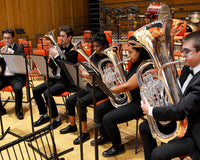What is Drum Therapy?
Drum therapy dates right back in history to when it was used to communicate through tribes and talking in African culture. Today, drums are used in therapy so that individuals can drum out their feelings without having to say a word. It is becoming increasingly popular in scientific research on how drum music therapy can help people by using it as a way to express their emotions. Drum therapy gives people an opportunity to drum out their feelings without needing to talk about things they don't want to. You are able to explore yourself and your inner issues. Drums are a loud instrument, they are known to give you confidence, be the loudest you want to be, begin a personal transformation and express yourself subconsciously. Whether this method is between a few people or thousands, it is simply a way of expressing yourself through rhythm and being able to tap into your emotions.
What do you do in drum therapy?
- Drum Conversations – Just like the African tribes, you can converse using drums in therapy. You would take it in turns to play a beat and exchange a musical dialogue between your groups.
-
Rhythmic Drumming – This is used as a team building experience. You would start off using simple drum beats and build them up individually throughout a group, for example:
- One person plays a single beat as the pulse of the pattern.
- The next person play a simple beat to mimic this pattern.
- Each person introduces a short pattern to layer over each other.
- Improvised solos and dynastic changes are introduced by individuals such as stopping and starting and dramatic build ups.
- Drumming to Music – You can re-create popular songs using different drumming patterns. Playing along to the simple 4 beat patterns in songs can be simple by using different drum tones to mimic the instrumental lines in the songs. This could be someone mimicking the vocal line, guitar riff, bass line and drum pattern to create a drumming song.
- Self Expression and Drum Emotions – This is an improvised session that lets you express exactly how you feel using a drum or percussion instrument of your choice, be it on your own or within a group. Exercises in a group are usually done by someone saying an emotion and you drumming out how you relate to it through your life experience. You can also drum an emotion for others to guess, making it a way of sharing your feelings and giving a response without having to verbally say it.
- Descriptive Drumming – Someone plays a drum riff that is related to a certain moment that has happened in their life, or even something they have seen and related too. You can then discuss about why you chose the rhythm and why it reminds you of that moment to help you talk about problems easier.
- Depression
- ADHD and ADD
- Autism
- Social Needs
- Communication
- Dyslexia
- Tourette’s
- Asperger’s
- OCD and ODD
- Stress
- Anxiety
- Emotional Distress
What drums do you use?
You can use any drums you want! The most common type is African drums due to its history with the therapy, but samba drums are also becoming very popular. You don’t just have to use drums, any percussion instrument can be part of the ensemble. People may feel intimidated by the larger drums to start off with so may opt for tambourines, shakers, triangles etc! If you need any more information or advice on drum therapy then please feel free to contact me and I will be happy to help and answer any queries you have.
You can get to me on 01283 535 333 option 1, or email to sales@normans.co.uk.















